An invite-only venue named Casa Eminente is parallel to a gorgeous secret hideaway bar in the heart of Prague.
Casa Eminente’s address is not accessible through search engines – it’s solely through an invitation that people can access this one-of-a-kind location. Its exclusivity and mystery make it very attractive.
At Casa Eminente you can taste premium spirits rum from Moët Hennesy. The star is however the Cuban premium rum Eminente, brought from the heart of the Caribbean island to the Czech Republic by Moët.
This rum embodied the dream of César Martí, the youngest rum master in the history of Cuba. Thanks to his strong determination and skill in the craft, Martí created a new type of rum that combines the richness and depth of taste of traditional rum production from the 19th century.
In addition, Eminente is one of the few Cuban rums to have received the requested status of “Denominación de Origen Protegida” from the Cuban Regulatory Board.
Moreover, a selected few can indulge in tropical drinks, food that complements their cocktails, and music. Additionally, during the summer, the interior is covered by a green and lush terrace.
Casa Eminente was created by Ingrid V. Lermen and her studio Intra Muros. It was her experience with Latin American and Hispanic culture that inspired her to emulate similar aesthetics and atmosphere.
“In Brazil and Cuba, I enjoy how heartfelt people are. I, therefore, tried to get a friendly atmosphere between the walls of Casa Eminente.”
According to her, the beauty of the venue lies in the vintage and old-feel of the objects that decorate the whole place.
The venue has been designed by using raw wood, giving it a natural look. A crystal chandelier hangs above the bar, and a huge mirror has been installed behind the counter.
Classic art-deco seats in teal color are set up across the venue. Casa Eminente wants the visitor to feel like they’re in Havana – and it succeeds.

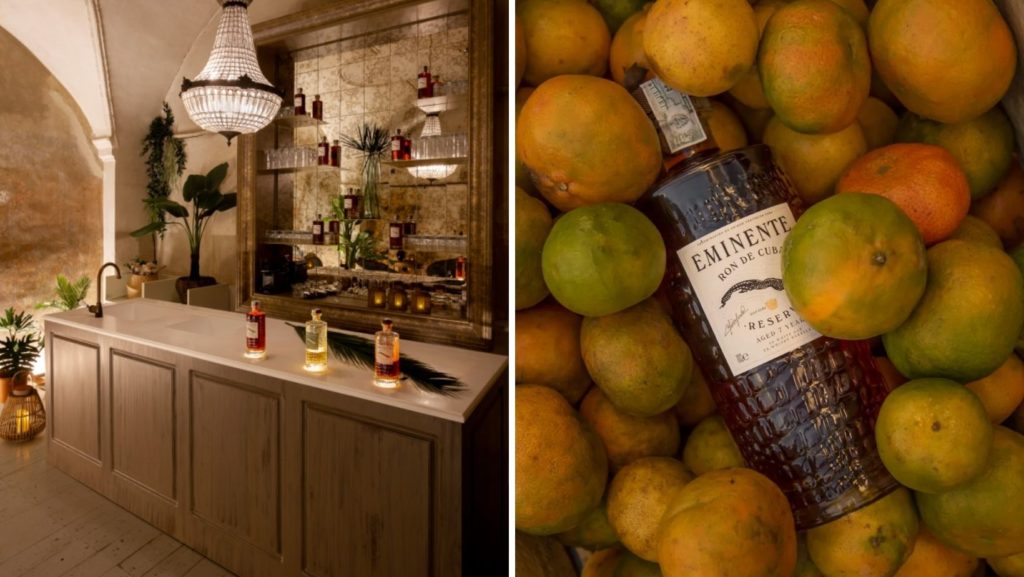
Prague 3 decided to fight cigarette pollution in a creative way. In the past few days, the City Hall has created and installed ten unique ashtrays.
The ashtrays are in the form of cigarettes – and they’re huge. The move was inspired by a similar project in Vienna, which had been running for several years already.
The prototype for the large cigarette ashtrays was made by Jaromír Frek. “I wouldn’t say the production was demanding. We did two versions, one pilot and one final. We were tinging paint and adjusting technical things,” he says.
The ultimate aim is to get people to throw the cigarette butts in the ashtrays, instead of leaving them on the ground. “Cigarette butts are garbage like any other and do not belong in public space. Cleaning from some surfaces is practically impossible,” explains Jiří Ptáček, mayor of Prague 3. A loose cigarette butt only decomposes in 15 years.
If the project is successful, the cigarette ashtrays will be installed in more locations.
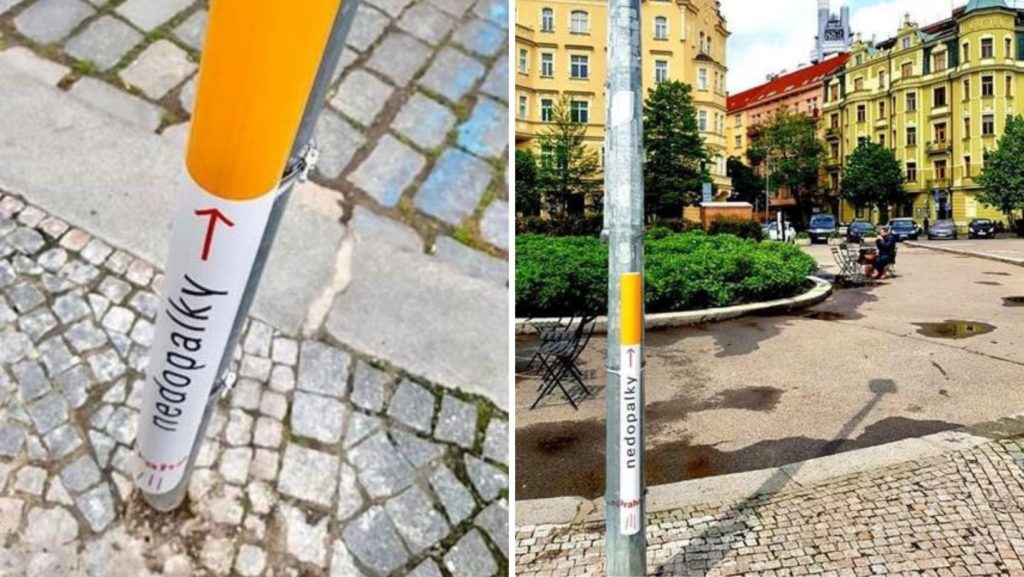
A total of ten ashtrays are located on Kostnice Square, in Seifertova, Lipanská, Koněvova and Biskupcova streets, two are on Jiřího z Poděbrady Square, another at the intersection of Táboritská and Ondříčkova streets and at the intersection of Vinohradská and Jičínská streets.
When the construction work is finished, ashtrays will be placed on Tachov Square and Lukášova Street.
“We select locations for the location of new ashtrays according to clearly defined criteria. These include, for example, heavy pedestrian traffic, the absence of baskets, subway entrances, entrances to underpasses and stops,” says the mayor.
Ashtray dumps are scheduled once a month. The purchase of an ashtray, including installation, costs approximately CZK 3500.
The Rudolfinum – home of the Czech Philharmonic Orchestra since 1946 – will undergo a renovation.
This week, the Czech Philharmonic Orchestra presented a project to modify the Rudolfinum’s terrace. The project will be a collaboration with developer Arcona Capital.
“From our point of view, it’s a simple matter. The project is very exciting, but we approach it with great responsibility. The aim is to open the terrace to the general public, and allow open-air concerts,” says Guy Barker, Director of Arcona Capital.
Additionally, part of the reconstruction’s aim is to even out surfaces, repair parts such as railings, and get electricity, lighting, and water running. Moreover, an elevator will be built.
The company started working on the project 18 months ago. It already holds a building permit from the National Heritage Institute, the Department of Heritage Care, and the Building Office of Prague 1.
The costs of CZK 23 million are covered by Arcona Capital, which wants to raise the money in a fundraising campaign that it will announce this year. The date for the start of the construction is still unknown.
All that is certain is that once the work has been done, it will be done within three months.
“We would very much like to open the roof to the public,” says David Mareček, Director of the Czech Philharmonic Orchestra.
The roof is endowed with sixteen statues of famous composers. However, it is only possible to visit it only as part of a virtual tour of the Rudolfinum.

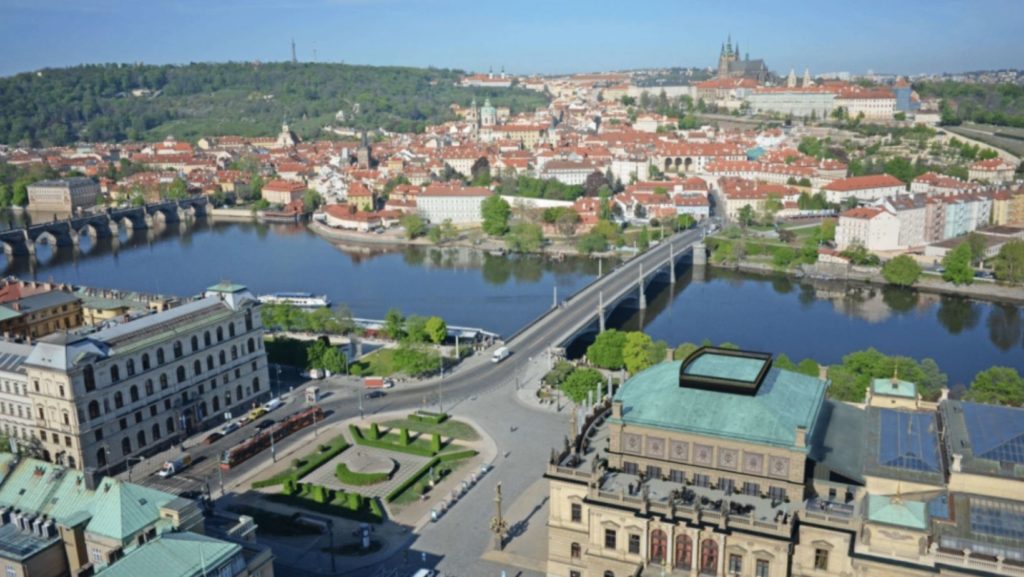
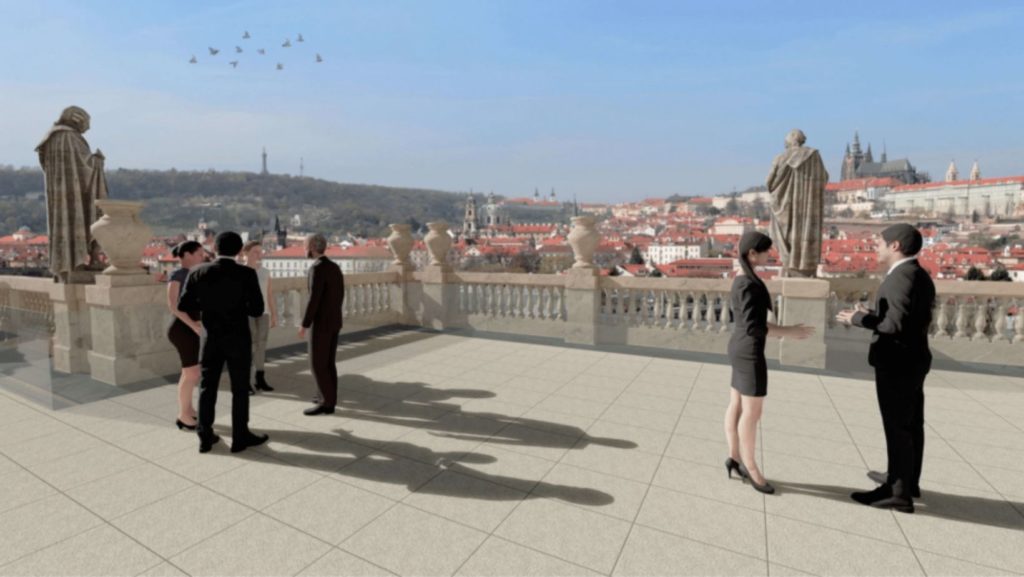
After years of preparation, a complete renovation of Wenceslas Square began on April 15, 2020.
The aim is to carry out a comprehensive reconstruction, which would correspond to the modern requirements of urban architecture, including putting in new networks for utilities.
A modern square in the heart of Prague would offer visitors an attractive environment, with a balance of all the necessary urban amenities. Due to the size and the complexity of the space, construction work is planned in two stages.
The lower part of the square is supposed to be completed by the end of 2021, while the upper part beginning from Vodičkova street, is to be completed in 2022.
Authorities want the square to have uniform paving on the streets, more spacious sidewalks, and new alleys.
The budget for the reconstruction will increase up to CZK 109 million. 85 million CZK of the budget will reportedly go to the construction of tram tracks.
The construction company collaborating with the city councilors wants 23 million CZK more due to extra work caused by unforeseen circumstances.
Construction work for Wenceslas began last year and originally was supposed to cost around CZK 330 million.
The company charged around CZK 8.7 million for the demolition of concrete structures, and another CZK 15.9 million for other changes and modifications. The biggest impact on the increased budget of reconstruction is the construction of blind tracks, which will be connected to the actual railway line in the future.
If the plan is approved, the city council will decide on its construction independently.
Reconstruction of the part of the square from Můstek to Vodičkova began last April and, according to the original schedule, should be completed this year.
Workers are gradually replacing surfaces, while more space for pedestrians is being built. Old trees in poor condition will be cut down, and new ones will be planted in their place.
Data Autotrans, a local bus operator, is launching a new bus service. The company offers a direct connection from Prague to Šumava, or ‘Bohemian Forest’.
It is the only bus thus far to provide a direct connection to the scenic destination.
The journey will take passengers from Prague via Mirovice, Blatna, Horažďovice, Rabí, Sušici, Kašpersky Mountains, Kvilda, Modrava, Srní and on to Prášily.
It is a long-distance journey, and Data Autotrans reportedly wants to let the service run on Saturdays, Sundays, and on public holidays.
The bus leaves Prague at 8 am on Saturdays from Florenc station. At the Kašpersky Mountains stop and all of the stops beyond it, the bus service is only accessible by calling, ie by phone at least one hour in advance.
The bus returns back to Prague from Prášily at 5 pm, and at 5:30 pm on Sundays. Tickets are quite affordable, for example, a ticket from Prague to Kašpersky Mountains costs CZK 169.
For a better idea of what the schedule is like, you can find the full timetable here.
Data Autotrans returned to a more regular schedule of its service in March this year. The carrier was heavily affected by the coronavirus pandemic since a large part of their business is oriented towards tourism.
Fortunately, the company is still running. Data Autotrans previously operated a line between Prague, Brno, and Bratislava.
Prague Morning had the opportunity to interview the staff behind Caviar Club, a successful and local seafood distributor, who are now venturing into the fields of gastronomy.
We had a chance to taste their delicious meals, made by their appointed chef, who had previously worked in a Michelin-star restaurant. Here is the full interview with the owner Marc Lucas of their intriguing and inspiring entrepreneurial and culinary journey.
Tell us a little bit about Caviar Club, how did it get started? What brought it to life?
“We started out with selling caviar in 2016, but then since our customers started asking us for other seafood options, we branched out. We now have an amazing collection of seafood – oysters, lobsters, fresh fish, Calvisius caviar, and Froya salmon, just to name a few.
Additionally, in our new Gourmet Shop & Bistro, we have a diverse collection of Italian and French cheeses, and salami and wines. You will not find these products at the supermarkets here in Prague. Our suppliers are from all over Europe. We want people in Prague to have a taste of something different.”
What does your brand stand for, in your own words? How do you maintain it, what distinguishes it?
“Ethically sourced, we always try to uphold this. For example, our anchovies and sardines are directly bought from a farm in Croatia, and not from any wholesaler, it’s the same with our oysters. We buy them directly from the farms. Our products come to us directly, with no third-party interventions. Another important thing for our company is to break any negative conceptions people might have with fish, especially farmed fish. We genuinely try to only source all of our products from ethical and sustainable farms. Our philosophy is that whatever we do, we try to select the best product from a specific category. It doesn’t need to be the most expensive, but the best-quality ones, with what money can get you.”
When did you open in this new location?
“We opened Food Republic on the 1st of March. Initially, we wanted to use this new location as a warehouse, but we thought it was kind of silly to keep using it as a warehouse, because it used to be a bistro, and it still looks like one. So, in the end, we made it into our own Bistro/ Gourmet Shop.”

What prompted you to take this initiative?
“Caviar club is a seafood distributor – we supply restaurants in Czechia and Slovakia, from hotels to restaurants. We also supply to Rohlik.cz and Makro.cz. We basically started with being distributors, and then we decided to branch out and open up this gourmet shop this year.
Lockdown has actually, in a sense, helped us decide to go forth with our plans of getting into the bistro side of things. Success on our e-shop also prompted a lot of our clients to ask us if we had a physical shop, and that pushed us even further to just go for it. We have a lot of plans and aims for the near future. We’re excited.”
Prague’s city representatives have decided to revitalize and recreate the urban greenery in the most popular and bustling areas of the metropolis.
Moreover, they want to expand and enlarge some areas, making way for new projects. These changes are planned for Stromovka, Letná, Vítkov Hill and Rohan Island.
Stromovka
Prague’s largest park ̶ its existence dating back to the mid-13th century will undergo modifications in the near future. The exhibition grounds, for example, will be incorporated into the park. The area will be expanded to up to 30 000 sqm., and the park will include a lawn, which in turn will provide shelter for all visitors. “We have already finished the project planning, and the work will start in the spring,” added Deputy Mayor for the Environment, Petr Hlubuček.
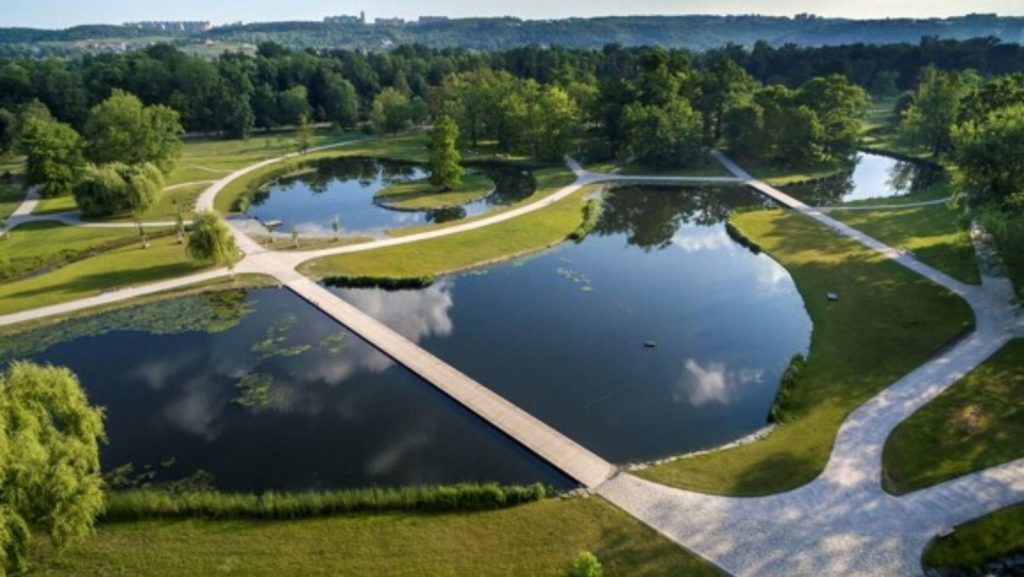
Letná
A new pond will be added in Letná. The water reservoir with an area of about 7 000 sqm. near the Hanavsky Pavilion towards Stalin, will serve both for the irrigation of the surroundings and as a recreational space. This area can serve as an oasis for many animals and citizens, especially during hot and scorching summer days.
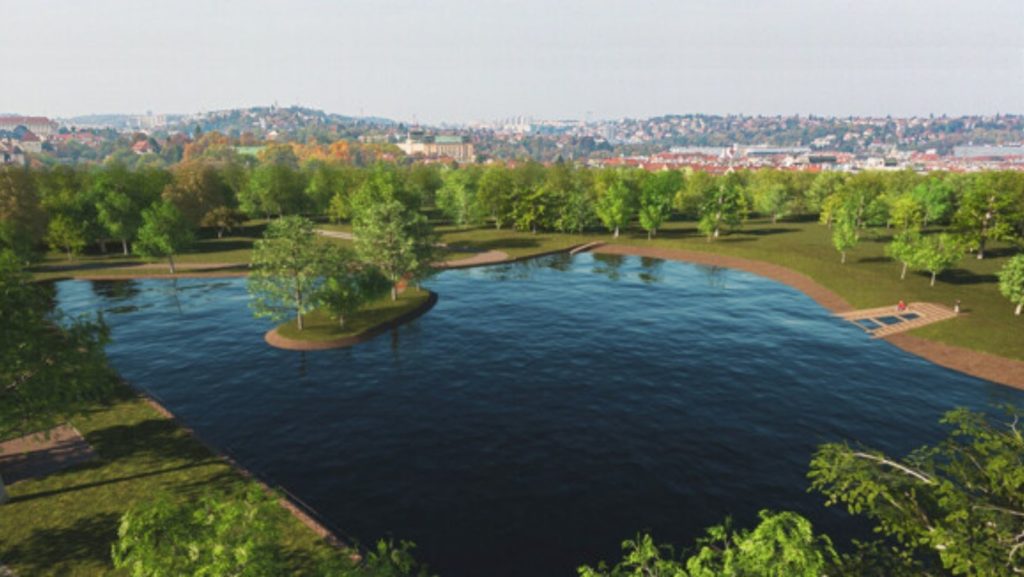
Vítkov Park
Vítkov Hill, with its densely interwoven network of walking trails, offers a unique view of almost the entire city. The area has undergone major improvements since 1929 when the National Monument was built here.
The whole park still exudes an atmosphere of the 1930s, dominated by a bronze equestrian statue of Jan Žižka, one of the ten largest equestrian statues in the world.
The revitalization of the Vítkov park is divided into six stages, and within five years, it will transform the park beyond recognition. City representatives plan to add new trees, replace street furniture, and replace broken asphalt with a more natural-looking pathway.
“The first stage should cost approximately CZK 45 million. The asphalt should be completely removed, there will be new lighting, new street furniture, and more greenery will be planted. I hope we start this year. It should be ready by the end of next year. Gradually, the rest of the park will be revitalized too,” said Petr Hlubuček.
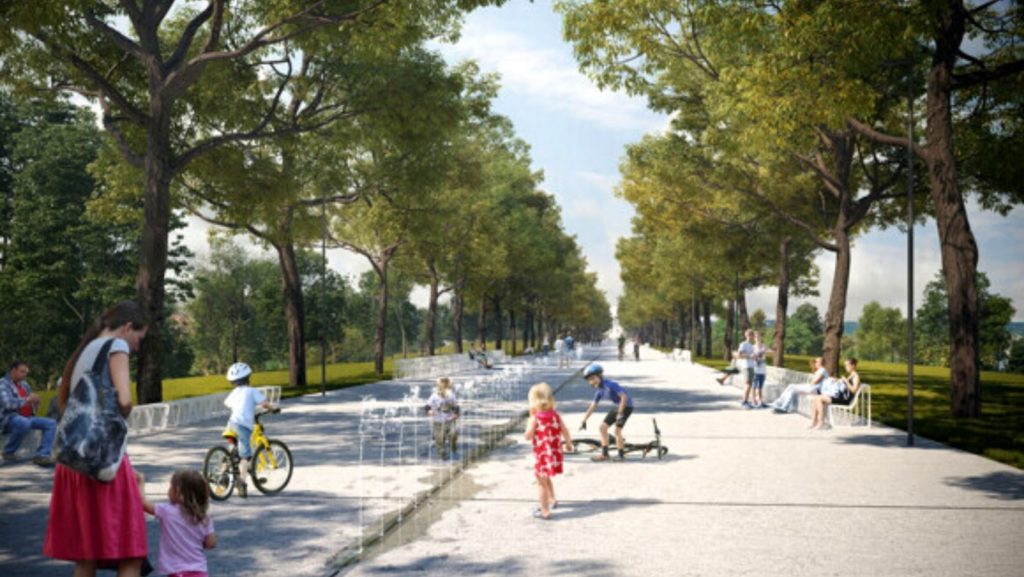
Rohan Island
Authorities want to commence installing new greenery on the site of the current concrete pit, in the area from the A2 cycle path towards the Vltava River. They reportedly plan on doing this during this year.
“In the first and second stages, we will modify the whole territory up to the Libeň Bridge. This will help during floods, and in turn, will protect Holešovice,” says Hlubuček.
However, the process of building a new park may be slowed down, because of current budget problems. Nevertheless, authorities’ future aims reveal the intention of constructing apartments, offices, and other public places in the area. These plans are set for 2030.

Around three dozen communists commemorated Labour Day this morning on Střelecký Island. The president and vice-president of the Prague Communist Party, Marta Semelová and Petr Šimůnek, spoke briefly at the memorial plaque – recollecting the events of the 1st Labour Day celebration on May 1, 1890.
On the other hand, counter-protesters also showed up at the scene, equipped with banners with slogans saying “Communist Party of Pure Evil” and “Totalitarianism Never Again!”.
However, the protest was relatively peaceful, even with the anti-Communist messages.
In other related events, the Communists party in Brno on Moravské náměstí, called on the general public to vote left in the parliamentary elections in Fall. There were about 100 members on the scene and a no-show from any opposing parties.
Due to the pandemic and lockdown restrictions, attendees were obliged to gather in small numbers and did not celebrate their traditional May Day events.
Party Chairman, Vojtěch Filip, advised districts to organize Labour Day celebrations that are tailored to social distancing obligations. He advised setting up events such as promenade concerts, where the general public will just walk by, and communist party members will be able to distribute promotional materials to them without extended close-range contact.
The party members delivered speeches, which lasted about half an hour overall. At the end of their program, they played the International Communist Anthem, followed by the Czech national anthem.
Moreover, at 1 pm today, an anti-government demonstration with up to 1,000 people took place in Letná. Afterward, a procession to promote civil liberties is to take place in Klárov at 2:30 p.m.
Additionally, the Pes Initiative invites citizens to take a walk from the Újezd cable car station to the Petřín stop. It will serve as a protest against the government’s approach to tackling the pandemic.
On the evening of April 30th, Czechs gather to build a bonfire and prepare an effigy of the witch that kept winter around so long.
While some locals call it the night of burning witches, the tradition actually has nothing to do with the persecution of witches.
Čarodějnice (Burning of Witches) or Filipojakubská noc (Philip and Jacob’s Night) is celebrated as a symbolic night of ritual cleansing, with the purpose of warding off evil spirits.
This year; however, because of government measures related to the coronavirus, official events will not be able to take place.
Firefighters have also been urged to be on alert, as incidents with fires at home are much more common than huge collective bonfires.
Even so, people do craft makeshift figures of witches from hay and other material and burn them, but perhaps this detail has just effortlessly integrated with the custom. It does make it more interesting to witness.
Czech ancestors believed that it was on this very day that the path to this world opened up to dark forces at dusk. It is quite a bewildering notion, but the forces are supposedly extinguished and banished by the power and the light of the burning flames.
However, this mystical custom was not always accepted and welcomed. In the mid-19th century, Filipojakubska night was actually prohibited from being celebrated, as it was regarded as a mere superstition.
The Nazis and the Communists did not like this tradition either, the former viewing the bonfires as a potential ‘guide’ for enemy aircraft, while the latter tried to rename it as ‘bonfires of peace’.
So, what exactly takes place during this curious event? Annually, thousands and thousands of fires are burnt on this day in the Czech Republic, where entire villages often meet.
A similar holiday is celebrated in many European countries from Ireland and Finland to Poland – however, every country has a different name for it.
July holds promise for vaccination of the youth, whilst authorities plan a booster vaccination in the near future due to a decrease in antibodies.
The Ministry of Health wants to open the vaccine registration for the youth (16-18+ years old) residing in the Czech Republic.
More than 100,000 people aged 55 to 59 registered for the Covid-19 vaccination on Wednesday, the first day they were eligible to do so, the Smart Quarantine announced on Twitter.
Those interested in the vaccine can register via the website of the Ministry of Health or apply for it at their GPs. The number of waiting places can be verified on the website of the Institute of Health Information and Statistics.
Additionally, there is supposedly a plan for booster vaccination, because of new mutations to the virus and a decrease in antibodies in the population.
According to Arenberger, vaccinations might take place in hospitals, “We have to realize that if we want to re-inoculate a group this large, we’re going to need new points,” said Arenberger. However, according to the President of the Association of General Practitioners, Petr Shonka, it would be more logical for this procedure to take place in the GP’s offices.
While this may be extremely good news regarding the vaccination progress, many family doctors are claiming that they have yet to receive an adequate number of vaccines for the oldest age group.
“Slovenia, Austria, and Hungary may have declared their intention to donate vaccines to us, but we have yet to see this done – no one contacted us with either preliminary information or a specific offer,” said Jana Schiller, a spokeswoman for the Ministry of Health.
Arenberger told the House Health Committee on Wednesday that vaccine supplies will be high this week; however, none of the COVID-19 vaccines promised to the Czech Republic in early April have arrived.
According to a statement from the government office, everything has been delayed and vaccines are promised by the end of June. Evidently, a pattern of consistent delays for vaccines has been going on for months.
Třešňovka Park in Prague 9 has been ornamented with a whimsical yet simple art installation. It was installed on April 16 and will stay in place until May 2.
The art installation consists of a long white fabric that has been hung on the tree’s branches, connecting them and flowing from one tree to another.
The white fabric supposedly embodies and represents transient energy and movement – something fleeting and temporary. They are supposed to stand in contrast to the permanent and solid nature of the trees. The symbolism is quite abstract and deep, but the display itself does add quite a charm to the orchard.
“The fabric is dragged with it completely without purpose, moving gracefully and randomly through space, as we do when we walk past through it.” commented its author Tomáš Kodet.
Kodet regularly walks in this orchard garden, and was evidently inspired and intrigued by the sigh of the old cherry trunks.
Kodet is an architect student, but he is also a conceptual art enthusiast.
“The intertwining of spaces and the broken ales, among the living cherries is a limp substance, dynamically torn by the wind. It is the perception of spatial contexts, trees as carriers of time, the fabric represents the plot. The visual and spatial barrier is constantly moving, but it is bound by trunks and branches that will not let it go and will not allow it to fly away.”
Visit this slightly ethereal and graceful installation idea at Pod Šancemi 444/1, Prague 9. It’s a gorgeous addition to the spring season.
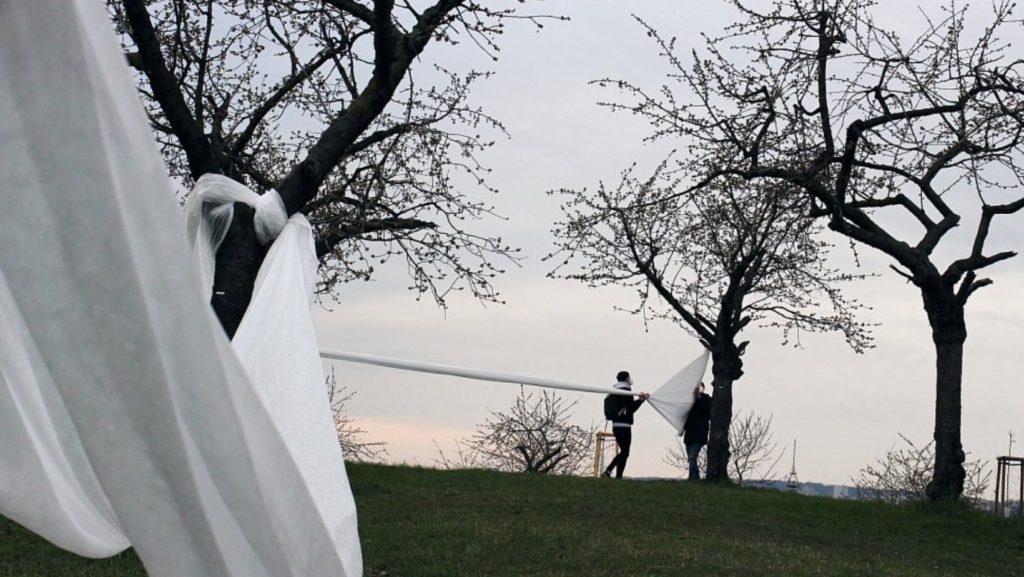
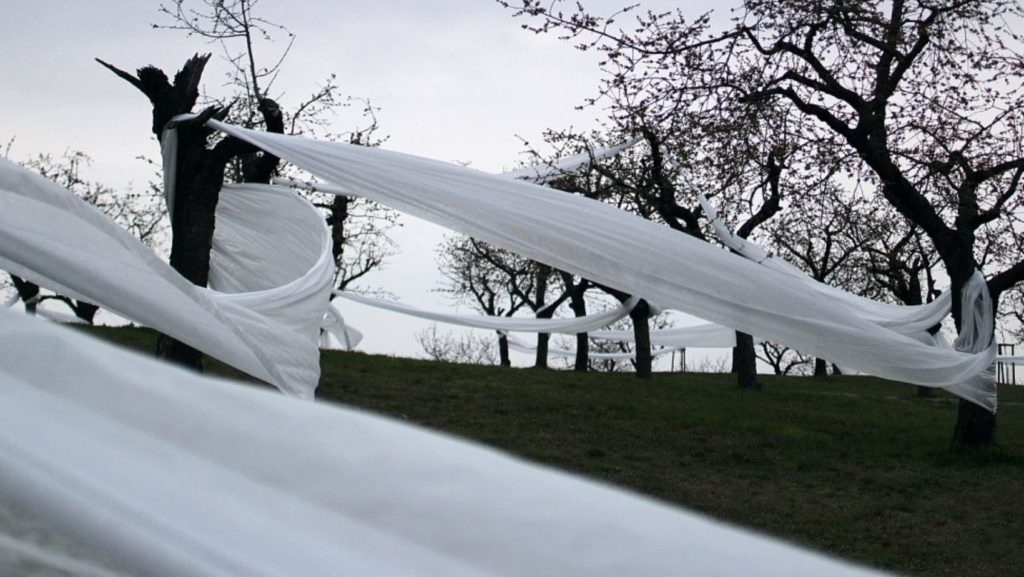
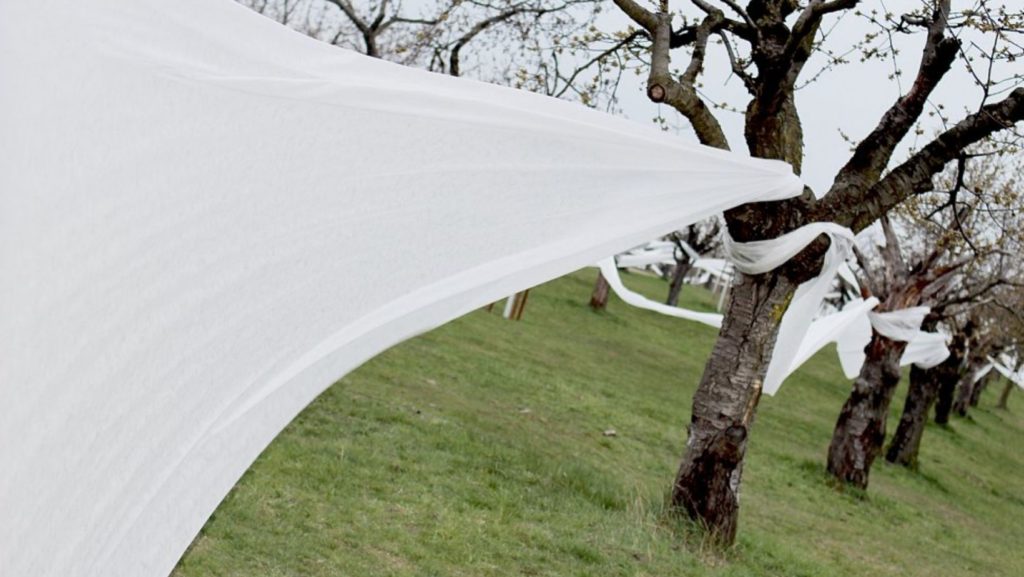
Signal Festival is celebrating Earth Day in style with a light installation in Holešovice.
The 8th year of the Festival was canceled due to the pandemic and yet, the Signal Festival’s director Martin Posta has commented that also 2021 edition is not 100% guaranteed.
“No one dares to assume what the situation will be like in autumn”, he stated. “That’s why we’ve prepared these smaller events for this year. We can’t wait to meet the festival-goers. The Czech cultural scene has had a hard time because of the pandemic, and people still miss art. We do have a lot of plans,” Posta said.
“We have updated the work, which was originally created for the Italian Triennale Milano, with the support of the Italian Cultural Institute in Prague so that it can be exhibited in a public space on the occasion of Earth Day. With the installation, we follow up on a series of burning environmental topics, which we have already prepared for 2020, and we intend to continue with them,” he added.
There is still a chance, that by October of this year, the festival will occur in the streets of Prague. This is obviously highly dependent on the current situation.
For now, visitors of the exhibition will find an installation called ‘The Room of Change’ by the Italian studio Accurat. It shows and maps the changes in the overall environment on our planet.
They call it ‘data tapestry’, recording changes over the past 20 years. Onlookers will be able to see unique images from NASA’s archives.
The installation will be accessible every day from 12:00 to 24:00, from 22 April to 28 April.
Free admission.
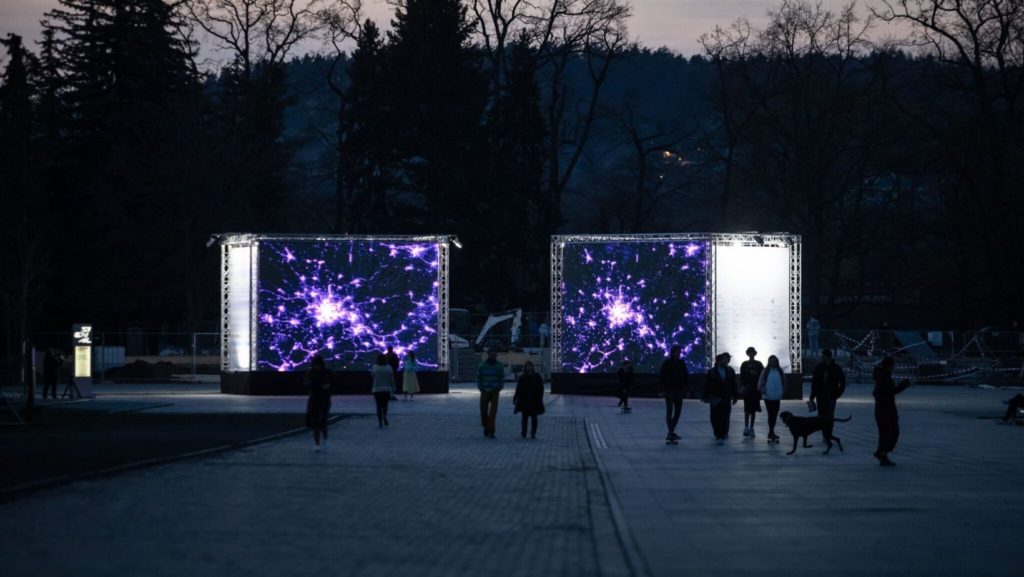
© Tomáš Slavík
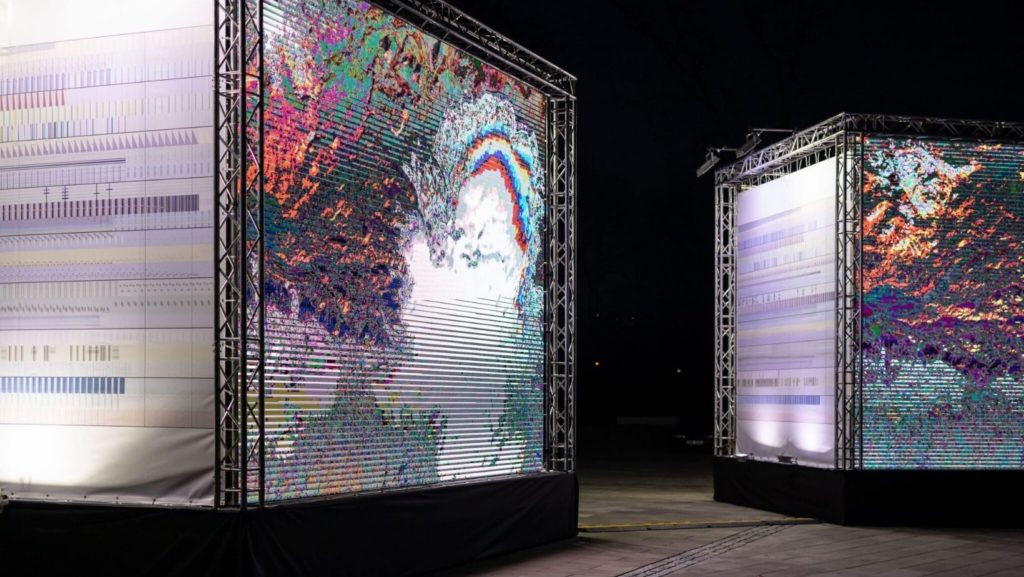
© Tomáš Slavík

